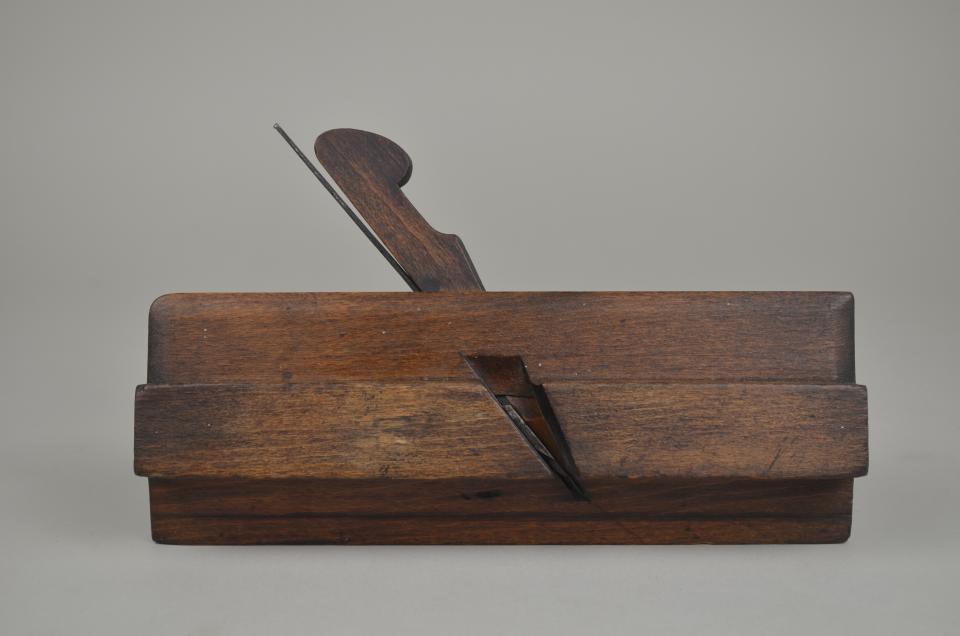
L: 23.9cm W: 3.8cm H: 15.1cm
a- L: 23.9cm W: 3.8cm H: 8.7cm
b- L: 14.8cm W: 2.6cm H: 0.7cm
c- L: 17.6cm W: 2.8cm H: 0.3cm
A wooden side bead plane consisting of 3 parts.
a- THe body is rectangular and made of a dark brown hardwood. A cheek protrudes lengthwise around the centre of the front body. The throat cuts diagonally through the middle of the body and is exposed through the cheek. The sole is curved concavely in an parabolic form with a small fillet at the front. The back edge of the sole extends down to form a fence. Stamps on the toe read: "JOHNSTON/GLASGOW"; "R.B. MATHIESON"; "Jon Lim?(nd)"; "I BLOWER". Stamps on the heel read: "I BLOWER"; "3/8".
b- The wedge is made of the same hardwood as the body. It tapers to a point on one end and is rounded in an elliptical form on the other. A shallow cut-out below the head allows for easy handling.
c- The iron is a narrow strip of dark grey metal. It abruptly widens near the cutting edge. The cutting edge consists concave curve paired with a flat angled edge. The width of the cut is 11/16".
Side bead planes are used to put a bead, or a convex groove, into the edge of a piece. They are considered molding planes. Beads can be put into any straight piece, but are popular in tables, shelves and doors.
